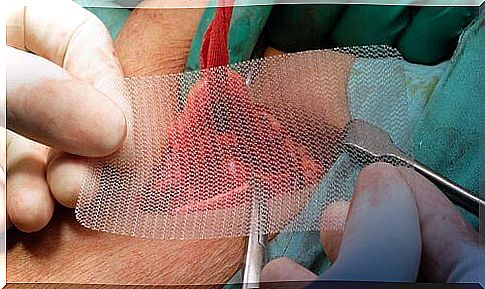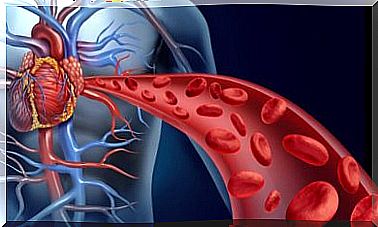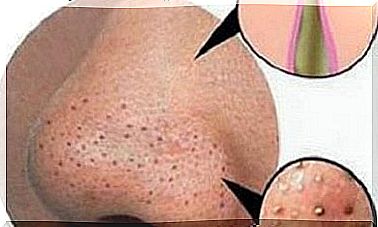What Is An Inguinal Hernia And How Can It Be Treated?

An inguinal hernia is also known as an inguinal hernia. In general, a hernia is a protrusion that can occur in the abdomen as well as in the groin.
It occurs when there is a weakness or opening in the abdominal wall. Normally, a hernia is a result of a problem with your body’s tissue structure and manifests itself in the form of a bulge.
We speak of an inguinal hernia when it forms at the exit of an intestinal loop – the jejunum or ileum – through the inguinal canal.
Inguinal hernia can be inherited or inherited. For example, if a young child experiences this type of hernia, it is usually congenital, whereas in adults it is usually acquired.
- Congenital hernias occur in up to 30% of all newborns and are a surgical emergency. In these cases, the hernia usually occurs in relation to an anomaly in the uterus.
- When a hernia returns, in 50% of cases it is the result of an infection.
In adults we often speak of an acquired hernia. In most cases, these types of hernias arise as a result of increased pressure from the abdomen caused by:
- pregnancy
- work that involves lifting heavy things or tightening the abdominal muscles
- diseases such as COPD
- prostatism (the effort required to urinate)

In addition, a hernia can be encapsulated or unencapsulated.
- An unencapsulated hernia looks like a mass that appears or enlarges when you exert yourself. Coughing or standing will therefore make these types of hernias bigger, while lying down will shrink the hernia.
- When a hernia is encapsulated, it does not grow or shrink at all.
Why do hernias occur in this location?
All types of hernias occur in areas of the body where there is ‘anatomical weakness’. That means all areas where the bodily walls are weakest. This is what happens to the inner abdominal wall, which is much weaker than the posterior abdominal wall.
Epidemiology of inguinal hernia
- These are some of the most common surgical pathologies. It is estimated that one in 30 people will suffer from it at some point in their lives.
- About 15% of all general operations are hernia operations. This makes this procedure the most commonly performed surgical procedure in the world.
- Inguinal hernia (inguinal hernia) and femoral hernia (femoral hernia) are the two most common types of hernias. Men in particular often seem to suffer from inguinal hernia, while a femur fracture is more typical for women.
- Hernias also recur relatively often. In half of these cases, this is caused by an infection.
Classification of an inguinal hernia
An inguinal hernia is classified based on the relationship between your bowel and where the colon runs through the groin. An inguinal hernia can be classified as:
A direct inguinal hernia
The intestinal loop crosses the bottom of the inguinal canal, around the Hesselbach triangle. The hernia may descend into the epigastric artery and then will not pass through the deep opening in the inguinal canal. It is located behind the cremaster muscle, but is not involved in its fibers.
This type of hernia is often seen in older people.

An indirect inguinal hernia
This is the most common type of hernia, in both men and women. This hernia occurs in the abdominal cavity through the deep opening in the inguinal canal.
In this case, the intestinal loop is located on the side of the epigastric artery and the ligaments in Hesselbach’s triangle. It goes along with the structures of the inguinal ligament, in the cremaster muscle. In some men, the intestinal loop may also occur within a testicle.
Symptoms of Inguinal Hernia
In general, only mild symptoms occur with an inguinal hernia. In most cases, patients wake up feeling good. During the day, however, they begin to notice discomfort when exercising or coughing.
In most cases, these types of hernias can only be reduced.
Complications
- Incarceration: In these cases, a hernia is ‘locked in’. These types of hernias cannot be reduced manually, but there is no vascular danger. The intestinal loop is correctly irrigated.
- Strangulation: in this case, the irrigation of the hernia is undermined. It is a surgical emergency and the intestines offer little resistance. And in this case there is a risk of necrosis.
In the case of a complicated hernia, it is impossible to reduce it. In addition, the pain is usually very severe and may be accompanied by a fever.
Diagnosis
The diagnosis is made through a simple physical examination, along with the patient’s medical history. In fact, often the patient already knows that he has a hernia. Still, it is important for all patients with abdominal pain to undergo an examination.
In view of the various possible diagnoses, it is important to have a physical examination as well as other tests to determine the cause of the acute abdominal pain.
Therapy
Treatment Goals
Surgical repair of a hernia is based on:
- Returning the loop of intestine to the abdominal cavity, without opening the peritoneum, if possible.
- Identification of the aponeurotic bands.
- Closing the opening that caused the hernia.
Surgical Treatment
The surgical treatment of an inguinal hernia can be performed through open surgery or laparoscopy.
The most commonly used open surgery techniques are herniography and hernioplasty.
- Herniography is an anatomical repair. This technique uses the patient’s own tissue to repair the hernia.
- Hernioplasty is a prosthetic repair. After the intestinal loop is returned to the abdominal cavity, a synthetic mesh is placed in this place to reinforce the wall. Currently, this is the best technique due to its high success rate.
The minimally invasive inguinal hernia surgery offers both advantages and disadvantages compared to traditional techniques.

On the one hand, it reduces post-operative pain as well as recovery time, while providing a more aesthetic result.
On the other hand, more complications can arise, both intraoperatively and extraoperatively. It can also cause the problem to return more often, and in the long run cause more costs and unknown side effects.
For these reasons, it is still a controversial process with many proponents and opponents.
Return
We speak of a recurrence when a hernia occurs again in the same area. Depending on how the hernia occurs, it can be immediate or delayed.
Return depends on a range of factors, some due to the patient and others due to the surgery.
Some dependent factors associated with the patient are:
- age
- the type of hernia
- existence of other diseases
Factors that depend on the operation are:
- inexperience
- bad technique
- incorrect diagnosis









